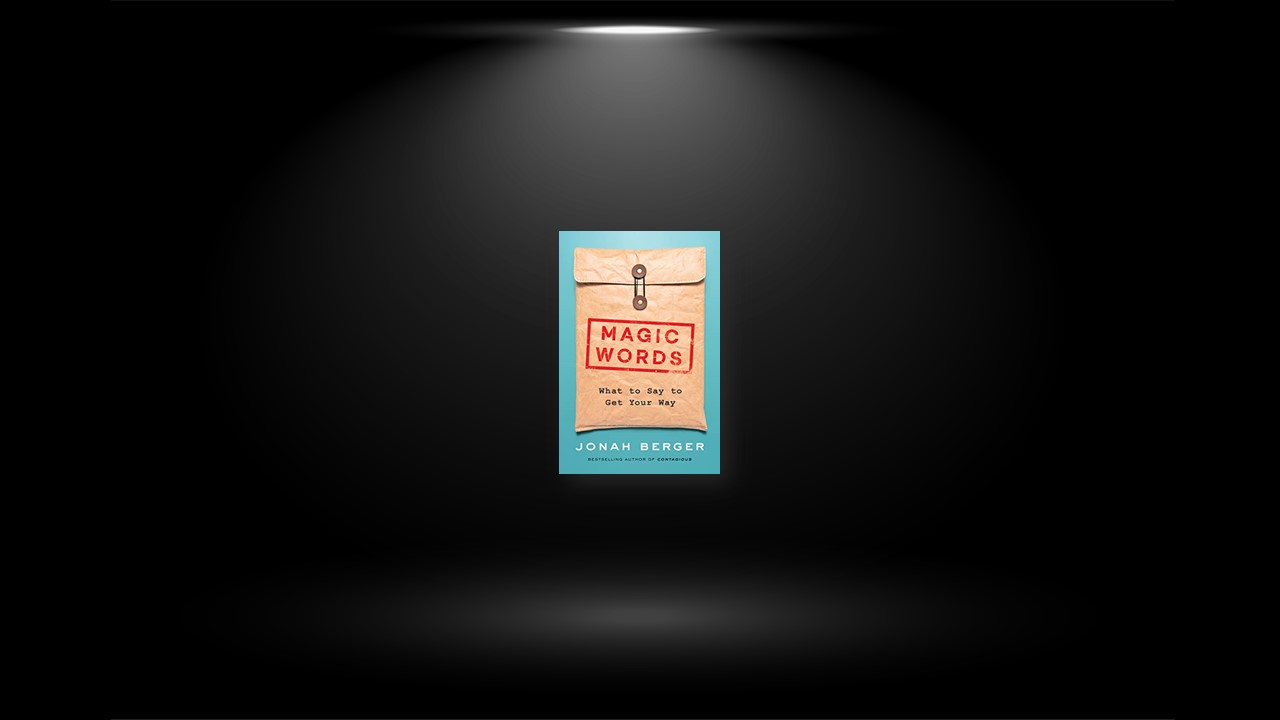Activate Identity and Agency
Words do more than just convey information. They signal who’s in charge, who’s to blame, and what it means to engage in a particular action. Consequently, by harnessing the language of identity, we can encourage desired actions, both in ourselves and others. To do that:
Turn actions into identities. Asking for help or trying to persuade someone to do something? Turn that verb (“Will you help?”) into a noun instead (“Will you be a helper?”). Framing actions as opportunities to confirm desired identities will encourage people to go along.
Change can’ts to don’ts. Having trouble sticking to your goals or resisting temptation? Rather than saying “I can’t,” try saying “I don’t” instead (e.g.,“I don’t eat sweets right now”). Doing this increases our feeling of empowerment and makes us more likely to achieve our goals.
Turn shoulds into coulds. Want to be more creative or come up with a creative solution to a tough problem? Rather than asking what we should do, ask what you could do instead. This encourages divergent thinking and helps us get out of that rut.
Talk to yourself. Nervous about a big presentation or trying to psych yourself up for a big interview? Try talking to yourself in the third person (“You can do it!”). It distances us from tough situations, reducing anxiety and increasing performance.
Pick your pronouns. And whether trying to get someone’s attention, or not fight with a spouse, think carefully about how to use pronouns like “I” and “you.” They can draw attention and take ownership, but they also suggest responsibility and blame.
Convey Confidence
Words do more than just convey facts and opinions. They signal how confident communicators are in the facts and opinions they are expressing. Consequently, words influence how we’re perceived and the impact of what we say.
Want to be perceived more positively? Increase your impact? Ditch the hedges. When the goal is to convey confidence, avoid words and phrases like “may,” “could,” and “in my opinion,” which suggest that things, and the people saying them, are uncertain.
Use definites. Rather than hedging, use definites instead. Words like “definitely,” “clearly,” and “obviously,” which suggest whatever was said isn’t just an opinion, it’s an irrefutable truth.
Don’t hesitate. Ums and uhs are natural parts of speech, but too many of them can undermine people’s confidence in us and our message. So cut the fillers. To decrease hesitations, plan what to say in advance or pause to collect your thoughts when needed.
Turn pasts into presents. Using the present tense can communicate confidence and increase persuasion. So to signal certainty, rather than using past tense (e.g., “I loved that book”), use present tense (e.g., “I love that book”) instead.
Know when to express doubt. While seeming to be certain is often beneficial, if we want to show we’re open minded, receptive to opposing viewpoints, or aware of nuances, expressing doubt can help.
Ask the Right Questions
It’s often been said that there are no stupid questions. But there are certainly better and worse ones. Questions help us collect information, but they also communicate things about us, direct the flow of conversations, and build social bonds. Consequently, we need to understand which questions to ask and when to ask them. Here are five guidelines to consider:
Ask for advice. Not only does it garner useful insights, it makes us seem smarter as well.
Follow up. Asking questions makes us look good, and facilitates positive interactions, but follow-up questions are particularly useful because they show we’re interested and care enough to learn more.
Deflect difficulty. When someone asks an unfair question, asking a related one back allows us to direct the conversation in a different direction, showing interest while keeping personal information private.
Avoid assumptions. When trying to get people to divulge potentially negative information, be careful of questions that assume things away.
Start safe, then build. Deep self-disclosure requires social connection. But to get to that point, people need to feel safe first. So to deepen social relationships, or turn strangers into friends, start simple and build from there, encouraging reciprocal self-disclosure.
Leverage Concreteness
It’s easy to talk abstractly. Particularly when we know a lot about something, we tend to communicate in a high-level way that we think is easy to understand. Unfortunately, however, this often misses the mark. Consequently, we need to harness the power of linguistic concreteness.
Make people feel heard. Want to show someone you’re listening? Be concrete. Give specific details that show we paid attention and understood. Be concrete. Don’t just pick things that sound good, use words that listeners can see in their minds. It’s a lot easier to imagine a red sportscar than ideation.
Focus on the How. Thinking about the nuts and bolts of how something will happen, and focusing on specific actions, makes things concrete. But while concrete language is often useful, if our goal is to come off as powerful, or make something seem like it has growth potential, using abstract language is better. In those cases:
Focus on the why. Thinking about the reasoning behind something helps things stay high level and communicate that big picture.
In sum, whether we want to help people understand what we’re saying, make them feel heard, or deepen engagement, the language of concreteness can help.
Employ Emotion
Most people would like to be more effective communicators. Tell better stories, have better conversations, make better presentations, or build better content. By understanding the value of emotional language, we can do all that and more. To leverage emotions’ power:
Highlight the hurdles. As long as we’re already seen as competent, revealing past shortcomings can make people like us more, not less.
Build a roller coaster. The best stories blend highs and lows. So to increase engagement, know when to go negative. Talking about all the failures along the way makes the successes evermore sweet.
Mix up moments. The same intuition applies to moments as well. Smooth rides are easy, but not the most engaging, so to hold people’s attention, mix it up a bit.
Consider the context. When trying to persuade, it’s not just enough to say something positive. Emotional language can help in hedonic domains like movies and vacations, but backfire in more utilitarian domains like job applications or software.
Connect, then solve. Solving problems requires understanding people. So rather than jumping into solutions, connect with the person first. Starting with warmer, more emotional language helps set things up for the more cognitive, problem-solving discussions that come later.
Activate uncertainty. The right words can make any topic or presentation more captivating. Evoking uncertain emotions (e.g., surprise) will keep people engaged.
Harness Similarity (and Difference)
We’re often so focused on what we want to communicate that we don’t think a lot about how we’re communicating it. And linguistic similarity can be even tougher to perceive. But that doesn’t mean it doesn’t matter, because similarity shapes everything from who is promoted and fired to whether songs, books, and movies become hits. To leverage its value:
Signal similarity. When familiarity is useful or fitting in is the goal, similar language can help. Paying more attention to how our colleagues are using words, for example, and adopting some of their mannerisms should help us thrive at the office.
Drive difference. But similarity isn’t always good; there are also benefits to differentiation, particularly if you’re doing a job in which creativity, innovation, or stimulation is valued, standing out might be better.
Plot the right progression. Further, when drafting presentations, writing stories, or crafting certain types of content, think about the progression of ideas. Start slowly to make sure the audience is on board before speeding up to increase excitement, particularly when entertainment is the goal. But if your goal is to inform, slowing down but covering more ground is the better way to go.


